If you’ve ever been gardening or studying soil ecosystems, you might wonder about the creatures you encounter beneath the surface. Perhaps you’ve stumbled across earthworms or spotted something smaller and more elusive that could be a nematode. This guide will clarify the distinctions between these organisms, helping you understand their specific roles and impacts on your garden and beyond while finally answering the question, are earthworms nematodes?
Earthworms are not nematodes. Although both are types of worms, they belong to different biological classifications and have distinct characteristics. Earthworms are part of the phylum Annelida and are segmented worms with a tube-shaped, segmented body. They are well-known for their role in aerating and enriching soil. On the other hand, nematodes, or roundworms, belong to the phylum Nematoda. They have a non-segmented, cylindrical body and are incredibly diverse, living in various environments such as soil and water and even as parasites in plants, animals, and humans.
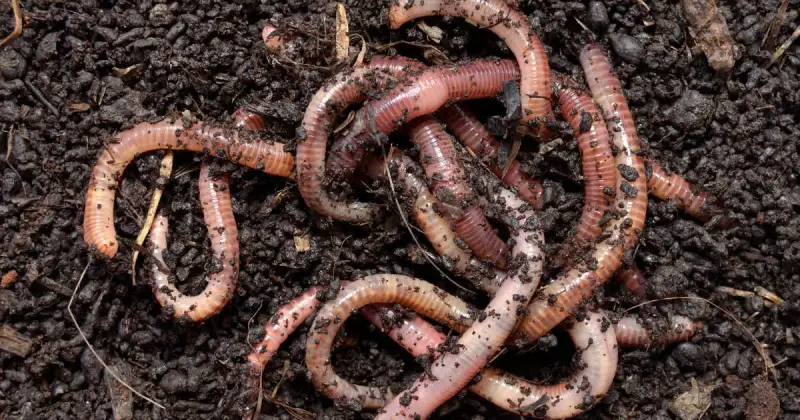
As you continue reading, you’ll learn more about the structure and functions of earthworms and nematodes. In this article, we’ve included critical insights into their biological differences, ecological roles, and effects on agriculture. Whether you’re a gardener, a student, or just curious about these creatures, you’ll find valuable information on how each contributes to and affects our ecosystem.
Humble Highlights
- Uncover the critical differences between soil nematodes and earthworms and how each performs specific duties in your garden so you can provide superior protection to your crops while boosting growth!
- Save time with this done-for-you chart that explains how earthworms and nematodes help cycle nutrients within your soil so you can provide the perfect ecological environment for your vegetables you can and make these backyard garden friends work hard on your behalf!
- Discover the vital role earthworms and nematodes play in the “soil food web” and their cumulative effects so you can enhance harvest yields while supporting the surrounding environmental quality.
Earthworms vs. Nematodes: Key Differences
One of the primary differences between earthworms and nematodes is their taxonomic classifications. Earthworms belong to the phylum Annelida, while nematodes belong to the phylum Nematoda. This difference in classification is indicative of the distinct characteristics each group exhibits.
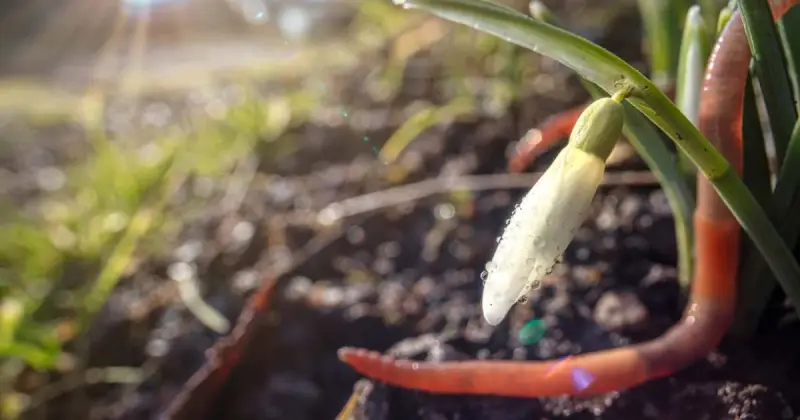
Earthworms have segmented bodies and a closed circulatory system, indicating a more complex structure. In contrast, nematodes feature a more straightforward body with a complete digestive system. 1
Regarding their roles within ecosystems, earthworms are crucial in enhancing soil structure and nutrient cycling, which has proven beneficial in agricultural settings, both large and small. Conversely, certain nematodes, particularly plant-parasitic nematodes, can harm crops by inflicting damage.
Recognizing the distinct environmental roles of earthworms and nematodes is essential for the health of soil ecosystems. Earthworms support sustainable agriculture, whereas nematodes demonstrate a variety of ecological functions. Acknowledging these differences allows for a better understanding of each organism’s contributions to its ecosystems.
Anatomy Contrasts: Earthworms vs. Nematodes
Earthworms, representing many earthworm species, exhibit a more complex anatomy than soil nematodes. Earthworms possess a complete digestive system, a circulatory system, and a coelom, indicating a higher level of complexity. Conversely, soil nematodes exhibit a more straightforward body structure, limited to a complete digestive system.
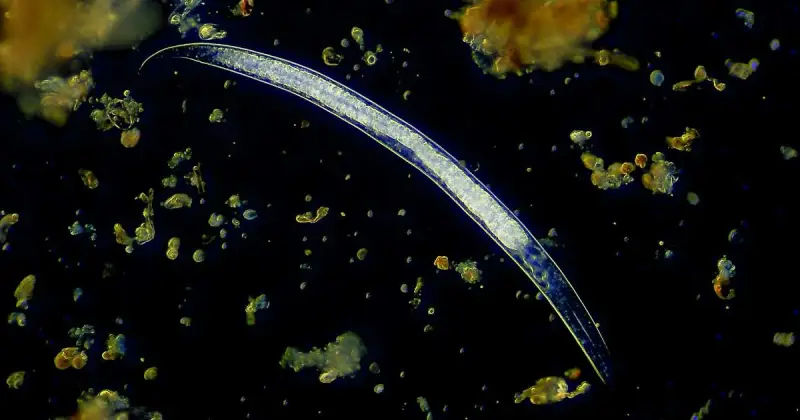
Reproductive methods also distinguish them; nematodes engage in sexual reproduction to enhance genetic diversity, whereas earthworms participate in copulation and exchange sperm packets.
Earthworms utilize setae and bristles for movement and defense. In comparison, nematodes depend on their cuticle for both protection and locomotion. 2
Furthermore, earthworms, classified as annelids, feature an elaborate nervous system and a closed circulatory system, representing a more developed organizational level than the simpler nervous system found in nematodes. These differences underscore the unique adaptations each organism has evolved to thrive in their specific environments.
Ecological Roles: Earthworms And Nematodes
In soil ecosystems, earthworms and nematodes have essential roles that significantly improve the environment’s health and functionality. Earthworms facilitate plant growth by expanding the area around the roots and enhancing root development through their burrowing actions.
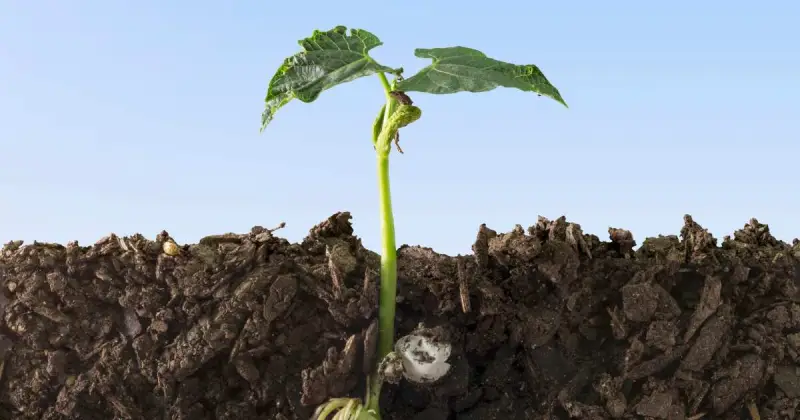
Their activity in soil is associated with a decrease in plant-parasitic nematodes and galls in tomato plants. Furthermore, using vermicompost has effectively managed these plant-parasitic nematodes, demonstrating the positive effects of earthworms on soil quality.
Earthworm tunnels, enriched with nitrogen compounds, can support nematode growth, indicating a cooperative interaction between these soil inhabitants. 3
Research has shown a direct relationship between earthworms and increased dry mass in tomato plants, emphasizing their vital role in promoting plant health.
Together, earthworms and nematodes enhance the ecological stability and productivity of soil ecosystems, encouraging robust plant development.
Soil Ecosystem Players: Earthworms vs. Nematodes
Comparing the roles of earthworms and nematodes in soil ecosystems highlights their significant yet varied contributions to nutrient cycling and plant health. Earthworms actively improve soil structure by aerating it, enhancing drainage, and decomposing organic matter, which releases vital nutrients that plants require. These organisms are crucial for maintaining soil consistency and improving biodiversity.

In contrast, although small, nematodes significantly influence soil biology due to their high population. They play a pivotal role in nutrient distribution, with some species decomposing organic material and others potentially damaging plants by attacking their roots. 4
Recognizing the interplay between earthworms and nematodes is crucial for maintaining robust soil ecosystems and promoting sustainable farming methods. Their joint activities are vital for the global health of our ecosystems.
Nutrient Cycling: Earthworms vs. Nematodes
Earthworms and nematodes are essential for nutrient cycling within soil ecosystems. Earthworms break down organic matter, enhancing nutrient availability for plants. Nematodes, meanwhile, decompose organic material, which also returns nutrients to the soil. Below is a comparison of their roles in nutrient cycling:
| Aspect | Earthworms | Nematodes |
|---|---|---|
| Feeding Habits | Ingest organic matter and soil | Consume bacteria, fungi, and soil |
| Impact on Soil | Improve soil structure and aeration | Aid in the decomposition of matter |
| Nutrient Release | Facilitate nutrient uptake by plants | Return nutrients to the soil |
These organisms are crucial for maintaining healthy soil, supporting plant growth, and ecosystem sustainability. Their activities ensure a continuous supply of nutrients, which is essential for a balanced soil ecology. 5
Impact On Plants: Earthworms vs. Nematodes
Nematodes and earthworms significantly affect plant health, each in different ways. Earthworms enhance plant growth by improving root development and increasing the area around the roots, improving overall plant vitality. The tunnels they create are enriched with nitrogen, promoting the presence of beneficial nematodes.

Conversely, certain nematodes damage plants, causing growth stunting and galls. However, research indicates that earthworms might mitigate these adverse effects by reducing gall formation in tomato plants affected by harmful nematodes. 6
Research supports a positive link between the presence of earthworms and the increased dry mass of tomato plants, highlighting the advantageous impact of earthworms on plant development. Using vermicompost, derived from earthworm activity, has been shown to suppress populations of harmful nematodes, providing a viable approach for pest management and healthier plant growth.
Soil Health: Earthworms vs. Nematodes
The impact of earthworms and nematodes on soil health significantly affects plant growth and nutrient cycling. Both organisms play vital roles in maintaining soil quality. Here are three critical aspects of their influence:
- Earthworms improve nutrient availability and facilitate root development, enhancing plant productivity and soil condition. 7
- The nitrogen-rich waste produced by earthworms may encourage nematode growth, impacting the structure of the soil nematode community.
- Research indicates a positive correlation between earthworm activity and the dry mass of tomato plants, showcasing their importance in promoting plant growth.
Understanding how earthworms and nematodes interact is crucial for the health of soil ecosystems. Recognizing these complex relationships aids in optimizing the conditions for sustainable agricultural practices.Earthworms and nematodes are different worms that belong to different phyla and have distinct anatomical and physiological characteristics. Check out the educational video below that details how vital earthworms are for your backyard garden and why you likely wouldn’t grow much significance without them!
Functional Variances: Earthworms vs. Nematodes
Understanding the distinct roles of earthworms and nematodes in soil environments is crucial for nutrient cycling. Earthworms inhabit deeper soil layers and enhance soil structure and fertility by promoting nutrient mineralization. Conversely, nematodes, primarily found near the soil surface, are integral to carbon and nutrient cycling.
Earthworms improve the microbial activity around plant roots, facilitating nutrient access, whereas parasitic nematodes can harm plant health by inducing diseases or disrupting nutrient absorption. Interestingly, earthworms are categorized by their behaviors and nematodes by their feeding types, each playing unique roles in the soil ecosystem. 8
Recognizing these differences is vital for effective soil health management and the advancement of sustainable farming. By acknowledging the specific contributions of earthworms and nematodes, efforts can be directed toward maintaining a balanced soil food web, thus enhancing both environmental quality and agricultural yield.
Importance In Soil Food Webs: Earthworms vs. Nematodes
Transitioning from the functional differences between earthworms and nematodes, we now examine their roles within soil ecosystems. Earthworms and nematodes each make distinct contributions that affect plant health and environmental quality. Here is an analysis of their importance:
- Earthworms: These organisms are crucial for improving soil structure and enhancing microbial activity. They consume organic materials, producing nutrient-dense waste that benefits plant growth and soil condition.
- Nematodes: These creatures can aid nutrient distribution and plant vitality or act as harmful parasites by attacking plant roots and competing for vital nutrients. Their relationship with plants significantly influences plant development and health.
- Cumulative Effects: Appreciating the interaction between earthworms and nematodes is essential for a robust soil food web. Earthworm activities enrich the soil, fostering plant development. Conversely, nematodes’ effects vary; some promote nutrient cycling, while others challenge plant health by engaging directly with roots and organic matter. 9
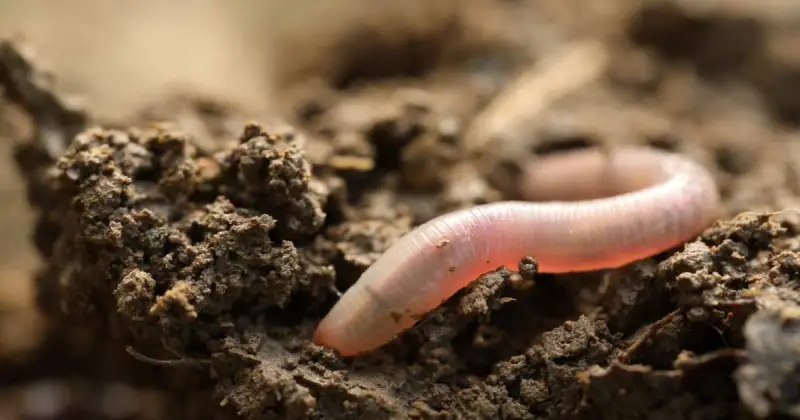
Verdict: Earthworms Are NOT Nematodes
Contrary to common belief, earthworms and nematodes are distinct entities from different species. Earthworms are categorized in the phylum Annelida and have a complex structure, whereas nematodes belong to the phylum Nematoda and possess a simpler anatomy. Nematodes feature a complete digestive system, but earthworms have additional systems like a coelom and circulatory system that differentiate them.
In agriculture, earthworms enhance soil health by promoting nutrient cycling, improving soil fertility, and increasing crop yields. Nematodes vary, with some being parasitic, which presents challenges by causing diseases in plants and animals, while others are free-living, contributing differently to their environments. 10
Recognizing the distinctions between these species is crucial for effective soil ecosystem management and advancing sustainable farming practices. Appreciating earthworms’ and nematodes’ unique characteristics and roles helps us understand their environmental impact.

Conclusion
Although both are crucial to soil health, earthworms and nematodes are distinctly different creatures. Earthworms are segmented worms with a more complex structure, and they play a significant role in decomposing organic matter and aerating the soil.
Nematodes, on the other hand, are tiny, unsegmented roundworms. Many of them protect plants by controlling pest populations. Each contributes uniquely to maintaining the balance of our ecosystems.
So, when you spot them in your garden, remember their specific roles and appreciate how they help sustain the environment. It’s a simple reminder of nature’s intricate and essential systems at work.
Do you apply nematodes in your garden or introduce earthworms to your soil to help improve plant health? We’d love to know your steps to success. Take a moment and leave a comment below and tell us how these hard-working helpers help boost your garden!
SOURCES
- ScienceDirect – Biotic Interactions Between Soil Nematodes And Earthworms
- ResearchGate – Earthworms And Nematodes: The Ecological And Functional Interactions
- Wikipedia – Earthworm
- Wikipedia – Nematode
- North Carolina State University – Vermicomposting
- University Of Hawaii At Manoa – Worms: Phyla Platyhelmintes, Nematoda, And Annelida
- Michigan State University, Extension – Earthworms Can Be An Indicator Of Soil Health
- University Of Maryland, Extension – Nematode Communities And Soil Health
- Ohio State University, Extension – The Soil Food Web
- IntechOpen – Earthworms And Nematodes: The Ecological And Functional Interactions


